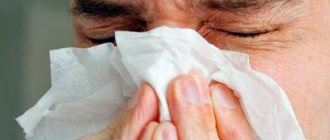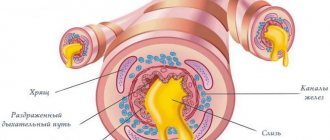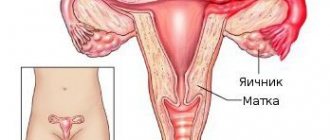Almost every one of us encounters a disease of the respiratory system called bronchitis at least once in our lives. Its main symptom is a severe cough, sometimes with shortness of breath and viscous sputum, as well as headache, general weakness, etc. But the worst thing is when a similar situation is repeated at intervals of several weeks, or even months. In this case, we may be talking about a more serious form of the disease, that is, chronic bronchitis, which causes a lot of problems for a person and is difficult to treat. So, what are the signs to recognize the chronic form of the disease, and how to get rid of it forever?
How to cure chronic bronchitis forever
How to determine chronic bronchitis?
As mentioned above, the key sign of any bronchitis is a cough, and in its advanced form it lasts about three months a year for two years in a row.
However, even if you have a prolonged cough, you should not make such a diagnosis yourself, because the development of the disease requires appropriate conditions and factors:
- history of irrational treatment of acute bronchitis;
- hazardous production (inhalation of chemical fumes, toxic substances, small dust particles, etc.);
- bad habits: smoking, alcoholism;
- genetic predisposition;
- the presence of chronic infection in the nasopharynx;
- infection of the body by parasites (helminths, pathogenic fungi);
- specific infections, including HIV, syphilis, tuberculosis;
- congenital or acquired deformities of the chest;
- autoimmune diseases associated with connective tissue lesions (systemic lupus erythematosus, rheumatoid arthritis).
Symptoms of chronic bronchitis
The essence of chronic bronchitis is that the above factors (one or more) have a negative effect on the bronchi and their mucous membrane. It begins to produce an abnormal amount of sputum, which does not have time to be eliminated, which creates an excellent environment for the proliferation of bacteria and pathogenic microorganisms.
During the examination, the doctor may note too long an exhalation, whistling and moist rales in the lungs. To make a more accurate diagnosis, a number of studies are carried out, including radiography, bronchoscopy, as well as tests to exclude tuberculosis, emphysema, neoplasms and other diseases.
How dangerous is the disease?
Initially, a patient with chronic bronchitis is only bothered by a cough, dry or wet, which can appear at any time of the day. Over time, it intensifies, odorless yellow sputum appears, then its volume increases, and the release of purulent masses begins. There is a violation of the patency of the bronchi, the person feels severe shortness of breath, first after physical exertion, and then at rest. At the same time, chronic fatigue, a feeling of weakness, and decreased performance appear.
What is chronic bronchitis
This form of the disease is called chronic obstructive pulmonary disease, since not only the bronchi, but also the lungs suffer from a lack of oxygen. The body begins to experience hypoxia, which leads to the development of a variety of disorders and pathologies, and ultimately can cause death.
Is it possible to cure chronic bronchitis forever?
This question worries all patients who have had to deal with a similar phenomenon. The answer to it depends on the spread of the pathological process, the stage and phase of the disease, but it is quite possible to get rid of mild chronic bronchitis once and for all. This requires timely contact with a specialist, accurate diagnosis and adequate therapy.
Treatment of chronic bronchitis
Treatment with drugs
It is recommended to begin the treatment process for this disease immediately after the first symptoms appear. Treatment must be comprehensive. When treating chronic bronchitis, it is recommended to eliminate the causes of the disease (smoking, inhaling harmful substances). Treatment of exacerbations and complicated forms of this disease must be carried out in a hospital. Doctors do not advise self-medication.
The drug Bronchicum
Bronchicum is a medicine of plant origin. This drug belongs to the group of expectorant drugs. It contains medicinal herbs and does not accumulate in the body.
The method of use of the drug depends on the symptoms and severity of the disease. There are three dosage forms of this medication: elixir, syrup and lozenges. The syrup is prescribed for children and adults over 12 years of age. The elixir and lozenges are recommended for children and adults over the age of 6 years.
The drug is not recommended for use during pregnancy and lactation, for patients with epilepsy, for people with brain injuries, or liver disease. If intolerance to at least one component of the drug is detected, you should stop using it. Before purchasing the drug, you should consult your doctor. There are side effects on the body: rash, nausea, gastritis.
Depending on the dosage form, there are different dosage regimens:
The average course of treatment with this drug is 10 to 14 days. The duration of use of Bronchicum depends on the severity and form of the pathology. With proper treatment and timing of use of the drug, negative consequences can be avoided. The drug is not recommended to be used in parallel with other drugs, as this reduces its effectiveness.
Storage conditions: at temperatures from 15 to 25 °C. Shelf life: 3 years from the date of production. An opened bottle is suitable for use for three months. Before use, the bottle must be shaken to remove sediment.
Traditional medicine
Most often, medications for chronic bronchitis are used in the acute phase, but during periods of remission, doctors often prescribe drugs that alleviate the patient’s condition and support the body.
Antibiotics
Treatment with antibiotics is carried out during acute periods, when an active inflammatory process caused by pathogenic microorganisms occurs in the patient’s bronchi. The prescription of a specific drug is carried out after the causative agent of the disease has been clarified and the necessary tests have been carried out.
| Group | Drugs | Example image | Efficiency | Reception features |
| Semi-synthetic penicillins | "Augmentin", "Amoxiclav", "Amoxicillin" | It has an effect on gram-negative strains, less effective against streptococci, staphylococci, spirochetes. Not active against Pseudomonas aeruginosa and Klebsiella | It is taken on an empty stomach, the dosage is determined depending on the severity of the disease and the characteristics of the patient’s body. Course of treatment – 5-14 days | |
| Macrolides | "Sumamed", "Clarithromycin" | They are effective against streptococci and staphylococci, Haemophilus influenzae, and chlamydia. Does not affect gram-positive bacteria resistant to erythromycin | Taken an hour before meals or regardless of meals. On average, the course of treatment is 3-5 days | |
| Fluoroquinolones, respiratory | "Moxifloxacin", "Levofloxacin" | Inhibits gram-positive strains (streptococci, pneumococci, listeria, and to a lesser extent enterococci), as well as gram-negative bacteria (hemophilus influenzae, gonococci). Inhibits tuberculous mycobacteria and some anaerobes | Taken 1-2 times a day, therapeutic course – 10-14 days | |
| Cevalosporins II, III generations | "Cefaclor", "Ofloxacin" | Effectively destroys gram-positive and gram-negative aerobes. Does not affect some enterococci and some streptococci | Take three times a day, the dosage is selected individually. Duration of treatment is 7-10 days |
Expectorants and bronchodilators
In addition to destroying infectious agents, during exacerbation of chronic bronchitis it is necessary to restore the basic function of the bronchi, eliminate their narrowing and reduce the amount of mucus produced. For this purpose, bronchodilators and mucolytics are used, which transform viscous mucus into liquid, making it clear through coughing, and expand the lumen of the bronchi, making it easier for the patient to breathe.
| Group | A drug | Image | Efficiency | Reception features |
| Mucus thinners | "ACC" | Liquefies and removes mucus from the bronchi, reduces the formation of secretions. Also effective against purulent sputum | The dosage and course of treatment depend on the course of the disease and the characteristics of the patient’s body. | |
| Mucus thinners | "Mukodin" | Reduces the viscosity of bronchial secretions, reduces cough | Average dosage – 50-750 mg per day until a therapeutic effect is achieved (duration of treatment 8-10 days) | |
| Mucoregulators | "Bromhexine" | Increases bronchial secretion, has a pronounced expectorant effect | Take one tablet regardless of food. Course of treatment – from 4 days to 4 weeks | |
| Mucoregulators | "Ambroxol" | The effect of the drug is similar to Bromhexine. Effective for respiratory distress syndrome | The average dosage is 1-3 tablets, depending on the patient’s age and the course of the disease. Taken after meals, long-term treatment is required to achieve the desired effect |
It is important to note that the effectiveness of mucolytic and expectorant drugs increases significantly when drinking large amounts of fluids (especially alkaline ones).
Bronchodilators
A good action for chronic bronchitis is called bronchodilators (bronchodilators). They must be used after the first signs of obstruction appear, that is, shortness of breath, difficulty breathing, etc. These drugs include Eufillin , Atrovent , Berodual , Salbutamol , Neophyllin , Fluticasone . They expand the lumen of the respiratory tract and eliminate negative processes associated with the disease. The best option for using such medications is inhalation using a nebulizer or inhaler, as they relieve bronchial spasm as quickly and effectively as possible.
Halotherapy
Halotherapy
One of the most modern methods of combating chronic bronchitis is halotherapy. The procedures are carried out in specially equipped chambers, where optimal conditions of humidity and temperature are created, and the air is thoroughly cleaned and saturated with saline solutions. With the help of halotherapy, patients can completely get rid of mild forms of the disease, and with a complex course, significant relief is achieved, thanks to which a person can do without medications for a long time.
Clinical picture of the disease
Chronic bronchitis can be distinguished by the following symptoms.
- Severe obsessive cough. At the same time, sputum is released - colorless, greenish, yellowish or black. When the disease is complicated, the sputum may be mixed with pus. If the cough is quite long and repeats several times over 2 years, in this case we can assume that we are talking about chronic bronchitis.
- Weakness. The general condition of the patient can be characterized as lethargic and broken. These signs manifest themselves especially clearly during the period of exacerbation.
- Dyspnea. Sometimes a complication of the disease occurs, blockage of the tubular lumens in the bronchi appears. The patient finds it quite difficult to breathe. Chronic bronchitis is dangerous because it can occur with serious complications that multiply the signs of the disease.
- Temperature. During an exacerbation, the temperature can reach 37.2-37.6C.
- Wheezing. When listening (auscultation), characteristic dry rales are heard. Breathing is harsh.
Important to know: Complications of chronic bronchitis
Folk remedies
Alternative medicine is often used in the fight against chronic bronchitis in combination with medications, but their use has a number of side effects and requires consultation with a pulmonologist.
The use of folk remedies and conventional medications should be carried out in such a way that the interval between their use is at least an hour.
Lemon with glycerin
Lemon with glycerin is suitable for patients of any age
An easy-to-use product that is suitable for patients of any age. Take a medium lemon, wash well and boil for 5 minutes. Let cool, squeeze the juice from half the fruit into a 250 ml container, add 2 tbsp. glycerin. Stir, add honey so that the resulting mixture fills the container to the top. Stir again and leave in a cool place for 2-3 hours. Drink one tablespoon before meals (30 minutes) until the therapeutic effect is achieved.
Black radish
Black radish is one of the oldest and most widely used remedies for combating bronchitis and other diseases of the pulmonary system. Take a medium-sized root vegetable, remove the core so that you get a cup-shaped container with a depression. Place a tablespoon of honey in it, without filling it to the brim, as the radish will release a lot of juice. Place in a suitable container, leave for 12 hours, then take the resulting juice a tablespoon four times a day, the course of treatment is 1-2 weeks.
Black radish is the most widely used remedy to combat bronchitis.
Onion
Onion is a strong natural phytoncide that destroys harmful microorganisms and helps relieve coughs in chronic bronchitis. Onion juice can be used for inhalation, or effective medicines can be prepared from the fruits for oral administration. Dissolve a glass of sugar in a liter of water, put two medium onions in the syrup and boil until the volume of the liquid is reduced by half. To treat chronic bronchitis, the remedy should be drunk two days in advance, and in other cases, take half a glass 2-3 times a day until the condition improves. Another effective recipe is as follows. Peel and chop two or three small onions, place in a saucepan and add milk. Boil until the onion becomes soft, then add honey to the liquid at the rate of a teaspoon per glass. Take a tablespoon every hour, the course of treatment is 1-3 days.
Onions help relieve coughs in chronic bronchitis
Herbal decoctions
Decoctions of medicinal herbs, as well as the fruits of coniferous trees, help well not only with chronic bronchitis, but even with confirmed pulmonary emphysema. Pour a tablespoon of soft pine buds into a glass of boiling water, steam for half an hour and let it brew for 15 minutes. Take a tablespoon three times a day until the condition eases. The mixture can be used as a solution for inhalation. If we talk about medicinal herbs, then Thermopsis lanceolata, licorice, plantain, coltsfoot, licorice, and creeping thyme have the greatest healing effect. They are taken orally in the form of decoctions, as well as alcohol or water infusions.
Video - How to treat bronchitis at home with folk remedies
How to cure bronchitis forever at home using inhalations?
How to cure chronic bronchitis forever at home? Experts warn that it will not be possible to completely get rid of this disease. With the help of medications you can only alleviate the condition. Inhalations based on :
- Lazolvana;
- Ambroxol;
- Fluimucila.
Ventolin nebula , Salbutamol , Berotek and Fenoterol are considered no less effective . All of the drugs listed are used in nebulizers . In addition, you can perform inhalations over a saucepan of boiling mineral water . It is best to take an alkaline solution for this purpose, such as “Essentuki” . In addition, steam from saline solution will help alleviate the condition of chronic bronchitis.
You can also use an old proven remedy - breathing over the steam from boiled potatoes . You can use water with a pinch of soda added. This procedure should be carried out within 7-10 minutes. The treatment course of inhalations should last 14 days with a break of 3 weeks.
It should be remembered that inhalations for chronic bronchitis are not carried out if the patient has a fever . In addition to the listed remedies, special breathing exercises will help alleviate the patient’s condition. The doctor will familiarize the patient with the correct execution of the exercises. In addition, he will tell you, if you have chronic bronchitis, how to cure such a disease forever.
General rules for the treatment of chronic bronchitis
The first and main condition for recovery for all people diagnosed with chronic bronchitis is a complete cessation of smoking, and patients should not even be in rooms where there is cigarette smoke. The apartment should be regularly wet cleaned, preventing the accumulation of dust, as well as ventilation (regardless of the time of year). In combination with medications, it is necessary to do therapeutic exercises, breathing exercises and harden the body. It is important to note that measures to harden the body are carried out exclusively during the period of remission with great care to prevent hypothermia of the body. Proper nutrition, spending time in the fresh air and taking vitamins play an important role in the recovery process. If you follow all the above rules, you can get rid of not only chronic bronchitis, but also forget about colds and ARVI forever.
Video - How to treat chronic bronchitis
Antibiotic therapy
It can be prescribed as part of an exacerbation of chronic bronchitis. But this is acceptable for the following symptoms:
- presence of intoxication;
- increased body temperature;
- expectoration of mucopurulent sputum in large proportions.
Pulmonologists can prescribe semisynthetic aminepenicillins, which have been potentiated with alpha-lactamase inhibitors. This is augmentin or amoxilav; the use of macrolides (azithromycin, macropen), cephalosporins (ceftriaxone, cefuroxime) and fluoroquinolones (lefoloxacin, cyprom, avelox) is also allowed.
Any of the antibiotics presented can be prescribed solely based on the results of sputum culture. However, it will not be possible to treat chronic bronchitis forever without the following group of medicinal components.
ENT diseases - general information on News4Health.ru
Otolaryngology is a branch of clinical medicine that studies the physiology and pathology of the throat, nose, ear and adjacent anatomical areas, as well as developing methods for the prevention, diagnosis and treatment of diseases of these organs. Otolaryngologists or ENT doctors (laryngo-otorhinologists) treat pathologies of the throat, nose and ear. The anatomical proximity and functional relationship of the ENT organs with each other led to the unification of their diseases into one area of medical science.
The areas of otolaryngology are audiology, which studies hearing impairments (hearing loss, deafness), and phoniatrics, which studies voice disorders (dysphonia).
Diseases of the ear, nose and throat accompany a person from early childhood throughout his life. For the most part, these diseases are inflammatory in nature, since the ENT organs are closely connected and are in constant interaction with the environment. The mucous membranes of the ENT organs contain a large number of opportunistic microorganisms, which, at the slightest imbalance in the body, turn into pathogenic microorganisms and lead to disease.
Among the most common diseases of the nasal cavity are adenoids, rhinitis, sinusitis, sinusitis, injuries of the nasal septum, and nosebleeds. Ear diseases often include otitis, tympanitis, eustachitis, and traumatic injuries. Common throat diseases include laryngitis, pharyngitis, chronic tonsillitis and other acute and chronic conditions. Megacities, with their large overcrowding and poor ecology, are a particularly favorable background for the development of ENT diseases.
Diseases of the ear, nose and throat are often complications of previous viral infections and develop against a background of weakened immunity. Each of the numerous diseases of the ENT organs has its own symptoms and clinical picture. The following symptoms should cause particular concern: persistent headaches, enlarged submandibular lymph nodes, pain in the throat and ears, deterioration of hearing and smell, difficulty in nasal breathing, discharge from the nose or ear. If, after suffering from a cold, several of the listed symptoms are present at once, then we can talk about advanced inflammation.
Delaying treatment or self-medication of any ENT pathology is fraught with serious health consequences. Disease in one of these organs can cause complications in the other. Often a common runny nose causes complications such as otitis media or sinusitis. Therefore, their treatment should always be interconnected and comprehensive. Prolonged inflammatory processes of the nose, ear and throat can also cause damage to other organs: heart, kidneys, joints. In addition, the anatomical proximity to the brain and eyes, developed innervation and blood supply to the head makes us consider ENT diseases as one of the most serious in terms of the development of life-threatening complications.
Modern methods for diagnosing ENT pathology include laboratory tests, endoscopic and computer studies of the nose, throat, and ear, ultrasound, and puncture of the paranasal sinuses.
The most important task in the treatment of otolaryngological diseases is to prevent the disease from becoming chronic. Therapeutic (drug, physiotherapeutic) and surgical methods are used in the treatment of ENT pathology. In recent years, minimally invasive laser and endoscopic methods have been actively used to treat otolaryngological pathologies, as well as methods of cosmetic and plastic surgery.












